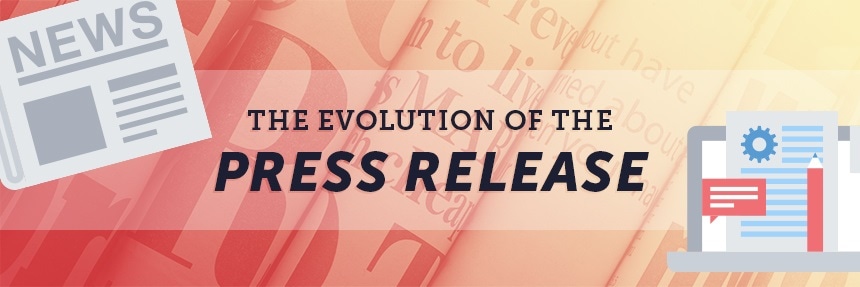
Are Press Releases Dying?
Press releases have been a key component in most marketer’s toolboxes for years. The original press release came about with the Atlantic City train crash of 1906. The Pennsylvania Railroad company took the bull by the horns by issuing the release, quashing any rumours which allowed them to manage the crisis on their terms.
That same press release was sent to The New York Times and was said to be printed verbatim. Over 110 years later and with the rise of the Internet, PR has been continuously changing. Editors of major publications became accessible at the click of a button and press releases fast became popular for marketers chasing link building tactics. However in more recent times, many press distribution sites have swiftly felt the full force of Google Panda 4.0 which devalues duplicate or unoriginal content.
Google Panda meant that many press release sites saw their traffic reduced by as much as 85%
With so many other channels through which to distribute your content, does this mean that the press release is dying?
More Like Evolving...
Years ago, putting together a quick press release and shooting it off to the media could get your message out and score you some news coverage. Now things aren’t so simple. Press releases can be effective, but if you want your press releases to work, you need to use them at the right time and in the right way.
Some would argue that unless you have developed a groundbreaking new product or discovery, you shouldn’t put out a press release at all. In today's modern marketing mix there are a range of social media skills, digital knowledge and attributes that the online marketer should possess, but developing a fantastic press release can still make an impact.
Why Use a Press Release?
There is still a strong case for maintaining a healthy flow of press releases with over 80 million people consuming news online every day. You can still get plenty of free publicity using press releases. When you get relevant and newsworthy information out there, it’s often picked up by other sources and published elsewhere online.
80 million people get their news online everyday
Before you do anything however, outline what you hope to achieve from the press release, what publications you will send it to and who will be your end reader:
- Have you made a groundbreaking new discovery?
- Have you released a new product?
- Will you be attending a show or hosting a webinar?
When looking at press from an editorial perspective, scientific and industrial publications usually look for three key criteria before posting:
- Over 250 words - This ensures that there is something of substance to announce
- Industry specific - No financials or appointments, these are generally pretty unengaging for a science/product focused audience
- High quality images - A picture paints a thousand words
Editors will ultimately look to publish press that will provide value and be of interest to their readers, there are occasional exceptions to the above guidelines, however they provide food for thought when creating your press release.
Though a press release might not help directly with SEO on its own, any editorial coverage that you get from it will. When you include keywords in your release, journalists may pick up on them and include them in their own coverage.
You Control Press Releases
Press releases are created by you, for you. That means that you get to use them to tell your story the way you want it told. Remember the Atlantic City train crash? The Pennsylvania Railroad company were able to explain why the incident had occurred and thus limit the fallout. You get to decide what messaging that journalists and bloggers use to describe you, and that helps you build your brand on your terms.
If Press Releases Are So Great, Shouldn’t I Always Use Them?
In a word, no. There are some times that press releases are not helpful. Yes, press releases can help your SEO, but that doesn’t always happen. For one thing, publication is temporary — so even if your press release is filled with all the right keywords, unless someone uses it to create new content, you won’t see much progress in your rankings.
Who Reads Your Press Releases Anyway?
Press releases are traditionally aimed at the editors of publications, however with an increasing number of digital channels now available, end readers are more accessible than ever. Put yourself in the shoes of the scientist or engineer who will be reading your content and think how to make it as interesting and engaging as possible. It's not easy coming up with quality content that provides value to the reader, if you are struggling to make it interesting, maybe you should go back to the drawing board and start again.
What’s the ROI?
With a press release, it’s difficult to tell. Unlike a blog or social media post, there are not really analytics that can tell you how well a press release is performing. There is no way to effectively say that a certain amount of media outlets decided to write about a press release based on how many read it. Because posting a single press release can cost hundreds of dollars or more, this can be a difficult pill for many marketers to swallow.
Meeting with journalists to find out what they look for in press releases is one way that you can learn to write to boost effectiveness. Having a working relationship with media outlets is far more valuable than having dozens of press releases out on the wire.
Use Sparingly
When written for the right audience at the right time, a press release can still get you positive attention. However, if you want to reach your readers on their terms when they are searching for you, you may want to consider a strategy that includes other effective distribution channels.